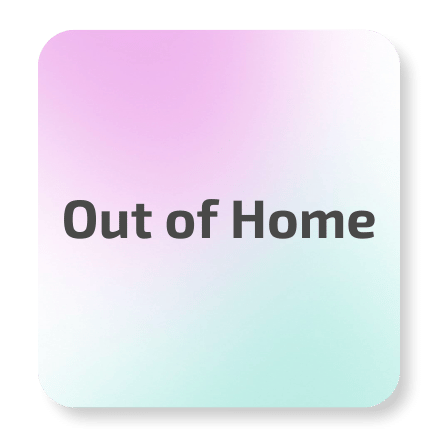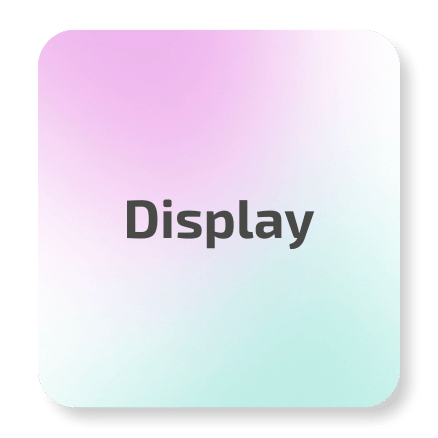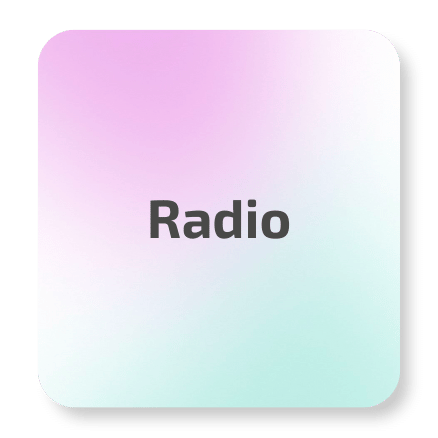General Outdoor Advertising Terms
OOH Advertising
Out-of-Home refers to any advertising that reaches people when they’re outside their homes — whether walking in the street, taking the MTR, riding a bus, or shopping in a mall. It includes billboards, bus ads, digital panels, and more.
Billboard Advertising
Large, static or digital signs placed in high-traffic areas like highways, flyovers, or building walls. In Hong Kong, they're often seen in areas like Causeway Bay, Central, or near cross-harbour tunnels.
Street Furniture
Ad panels integrated into public amenities — think bus shelters, benches, kiosks, or info boards. These are often backlit and placed at eye level for better visibility.
Transit Advertising
Ads that appear on or inside transport systems — such as buses, trams, taxis, or inside MTR stations and trains. It’s one of the most effective forms of mobile visibility in dense cities like Hong Kong.
DOOH
Digital-out-of-home, the digital version of OOH: LED screens, animated panels, or LCD displays. These can be updated in real time, run multiple creatives, and even be triggered by time of day or weather.
MTR Advertising
Premium placements inside the Mass Transit Railway system. This includes escalator panels, platform doors, trackside lightboxes, and full train wraps — giving brands massive exposure to millions of daily commuters.
Bus Advertising
Full or partial wraps covering the exterior of a bus. Often used to make a statement across multiple districts as buses travel citywide.
OOH Screen
Digital boards that can display moving images, videos, and rotating creatives. High-impact spots include Mong Kok, Yau Ma Tei, and the cross-border highway to Shenzhen.
Site Visibility
Refers to how clearly an ad can be seen — including its location, angle, height, and how long it’s visible to passersby or vehicles.
Impression Estimate
A forecast of how many people are likely to see your ad. In OOH, this is often based on traffic flow data and location analysis.
FOOH
Fake-Out-of-Home is type of digital advertising that uses CGI or visual effects to create the illusion of real-world outdoor ads, often shared online to generate viral buzz and brand visibility.
Digital Advertising Terms
Display Ads
Image or banner ads shown across websites, apps, or platforms like Google’s Display Network. Common formats include rectangles, skyscrapers, and animated HTML5 units.
Programmatic Advertising
Automated ad buying that uses data and algorithms to serve ads to the right person at the right time. It’s often cheaper and more efficient than manual media buying.
Google Ads
Google’s ad platform that allows businesses to run search ads (on Google search), display ads (across millions of websites), video ads (YouTube), and app promotions.
Social Media Ads
Sponsored content on Facebook, Instagram, LinkedIn, TikTok, or Xiaohongshu. Popular for reaching targeted demographics via interests, location, and behavior.
PPC meaning Pay-Per-Click
You only pay when someone clicks on your ad — common in Google Search and Meta ads. Good for budget control and lead generation.
CPM meaning Cost Per Mille
Cost per 1,000 views. Often used in display and OOH advertising to compare reach vs. price.
CTR meaning Click-Through Rate
The ratio of people who clicked on your ad versus those who saw it. It helps evaluate ad performance.
Retargeting Ads
Ads that follow users who previously visited your website but didn’t convert — reminding them to come back and take action.
Conversion Tracking
The process of tracking what happens after a user interacts with your ad — such as filling out a form, making a purchase, or requesting a quote.
Landing Page
A dedicated web page designed to convert ad traffic. It’s focused, clean, and has one main goal: get the user to act.
A/B Testing
Running two versions of an ad or landing page to see which performs better. A common tactic in digital marketing optimization.
General Marketing Terms
Brand Awareness
How familiar your target audience is with your brand. OOH ads are excellent for boosting this, especially in areas with high foot traffic.
Marketing Funnel
The customer journey from first seeing your brand (awareness) to researching it (consideration) to finally taking action (conversion). Good campaigns address all stages.
B2B Marketing
Business-to-business marketing — where your customer is another company, not an individual. Adintime’s audience fits this profile.
Call-To-Action (CTA)
A clear prompt that tells the user what to do next — like “Book Now,” “Request a Quote,” or “Learn More.”
KPI (Key Performance Indicator)
Metrics you track to measure your success. Common ones include impressions, CTR, conversions, or ROI.
Customer Persona
A profile of your ideal customer — including their job role, interests, pain points, and goals. Helps tailor your messaging and media choices.
Media Buying
The process of negotiating and purchasing ad space — whether it’s a billboard, website, or TV spot.
Media Plan
A structured plan that outlines where, when, and how you’ll run your ads — based on your objectives and budget.
Owned Media
Any channels you control — such as your website, newsletter, or social media pages.
Earned Media
Exposure gained through PR, word-of-mouth, or social sharing — not paid for directly.
Paid Media
Advertising space you pay for — whether it’s online, print, OOH, or social.
Hong Kong–Specific & Advanced Terms
KOL (Key Opinion Leader)
An influencer with a niche following, often used in local campaigns across Instagram, YouTube, or Xiaohongshu. Similar to Western influencers but more central to Asian marketing.
Xiaohongshu Advertising
Little Red Book (RED) is a platform combining social media and e-commerce. Many brands in Hong Kong use KOLs to reach high-intent buyers from Mainland China.
WeChat Ads
WeChat is essential for reaching tourists or residents from the Mainland. Advertising includes banner ads, Moments ads, and in-app mini programs.
Flash Campaigns
Short, intensive promotions — typically 1 to 3 days — to create buzz around a product launch, store opening, or seasonal sale.
Interactive Display
Screens that allow real-time interaction — touchscreens, QR codes, or even motion sensors. These are especially popular in DOOH campaigns in malls or exhibitions.
Geo-Targeting
Delivering ads based on the user’s real-time location — ideal for targeting people in specific Hong Kong districts, malls, or tourist zones.
Street-Level Activation
On-the-ground promotions like promo truck, mascot appearances, or product sampling — used to generate buzz and engage passersby directly.
 Cookie preferences
Cookie preferences







